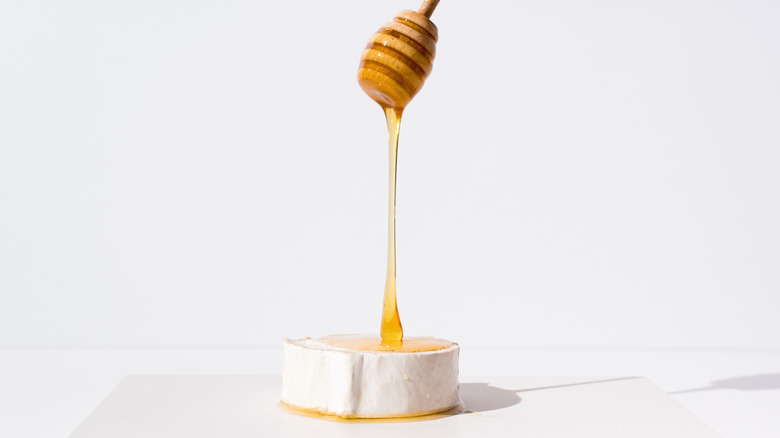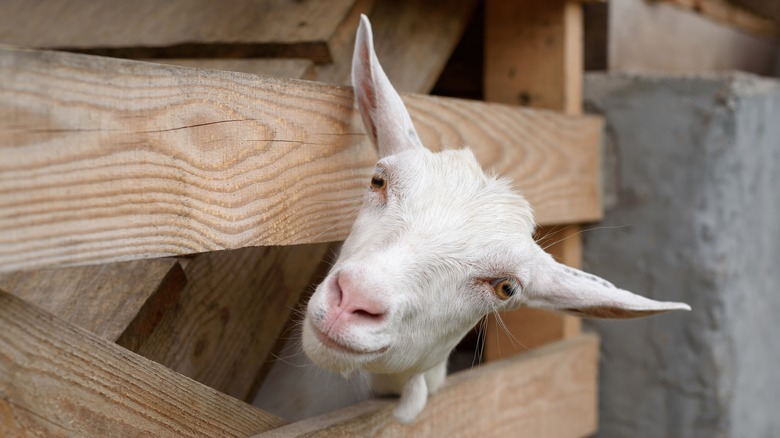The Real Reason Goat Cheese Is So Much Whiter Than Cow's
Creamy and earthy with just the right amount of tartness, goat cheese is undeniably delicious. The star of any recipe, its vibrant acidity and buttery texture can add another dimension to risotto, panini, salads, and savory dips. However, one interesting thing about goat cheese is that it's almost always an ivory color. Unlike the golden and yellow hues characteristic of cow's milk cheeses, goat cheese is significantly whiter — but what's the real reason?
Made from curdling goat's milk, MasterClass explains that the cheese gets its distinctive aroma and tangy flavor from medium-chain fatty acids like caprylic acid and capric acid. Interestingly, Healthline reports that capric acid boasts antibacterial and anti-inflammatory properties, which definitely makes snacking on goat cheese all the more appealing.
As for aesthetics, if you've ever wondered why the tangy cheese has a milky white shade even long after it's been aged, the answer lies in science.
Goats convert beta-carotene more efficiently
Cheddar versus chevrè, the latter will always be whiter. Far from coloring agents, goat cheese owes its hue to genetics. It's true that both cows and goats have a diet rich in grass, which is rich in the orange-colored pigment known as beta-carotene, notes America's Test Kitchen. But while you might expect both cow and goat milk (and their consequent cheeses) to each have a golden tinge, goat cheese remains white.
This phenomenon is due to one simple reason: goats process beta-carotene differently than cows. According to The Cheese Wanker, goats are able to fully digest and convert the pigment into vitamin A, which is totally colorless. The result is a vibrant pearly milk and matching white cheese.
That said, Slate also suggests that some acidic cheeses can retain their protein structures, allowing the fat-soluble beta-carotene to remain concealed during the curdling process, giving the impression of a more opaque, white hue.

